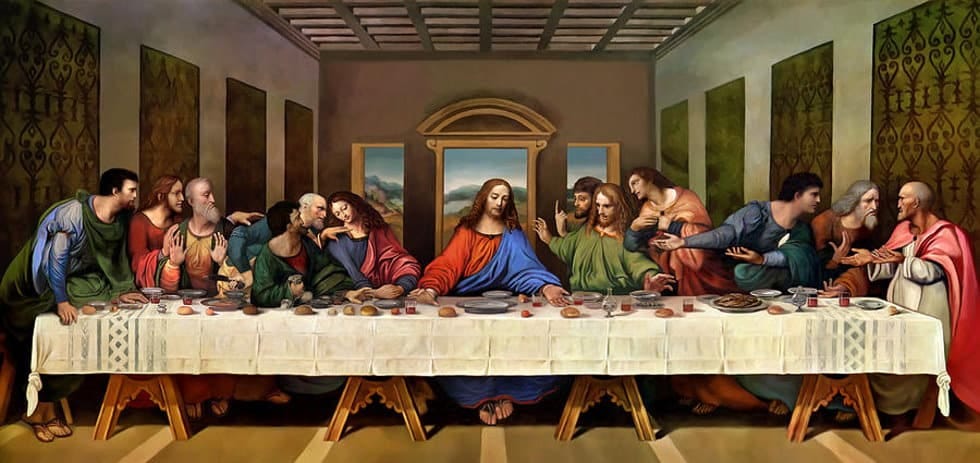The New Commandment
John 13:34-35
Thursday, April 14, 2022 — Maundy Thursday
The Thursday before Easter is called Maundy Thursday. The term “Maundy” is believed to come from the Latin “mandatum”, meaning “command” or “commandment”. What is the commandment, and why do we commemorate this day?
A lot was happening in these hours before Jesus was arrested. A Passover supper was celebrated by Jesus and His Disciples, and the Messiah knew what was going to happen to Him in the next few days. Let’s take a closer look at the actions that took place at The Last Supper.
Jesus Washes His Disciples’ Feet
In Jesus’ time, traditional hospitality would have the lowest servant in a home take a basin of water and a towel, then wash the feet of the guests. In John 13, Jesus acted out a parable to teach the Disciples about humility.
First, He “rose from supper”, a place of rest and comfort, just as He had risen from his throne in Heaven. Next, He “laid aside his garments”, symbolizing how He laid aside His glory and took off his heavenly raiment.
He then “took a towel and girded himself”, getting ready for the task of washing the feet, much in the way that He took the form of a servant and came ready for work. Now He “poured water into a basin” ready to clean the dirty feet, symbolic of the way He would pour out his blood to cleanse believers from the guilt and penalty of sin.
After washing the feet, He “sat down again”, mirroring the way that He would sit down at the right hand of God the Father after cleansing us.
Jesus Predicts His Betrayal
During the meal, Jesus remarked that “one of you will betray Me”. When asked by the Disciples, He responded that “It is the one to whom I give the bread I dip in the bowl”. Giving an honored guest a special morsel like bread dipped in olive oil was a tradition, and close examination of the Gospels shows that John was to one side of Jesus, Judas on the other. It’s likely that none of the other Disciples overheard his comment about the bread, so John knew who the betrayer was, and Judas was given an opportunity to repent.
Jesus giving the dipped bread to Judas demonstrated His love, even for those who were His enemies. Judas accepted the bread rather than repenting, at which point “Satan entered into him.” Judas rose to leave, with Jesus remarking to him, “Hurry and do what you are going to do.”
So, why did John not stop Judas from leaving? He was probably too shocked to stop him, or might have been confused by what Jesus said.
The New Commandment
At this point, Jesus told the remaining Disciples “Dear children, I shall be with you a little while longer” and “Where I am going, you cannot come”. The Disciples were most likely shocked by this message, as they expected the Messiah to be an earthly king of Israel and still assumed that they would get high-ranking positions in the king’s government. After following Jesus for three years, this would have been a letdown of major proportions.
Then comes the New Commandment:
'So now I am giving you a new commandment: Love each other. Just as I have loved you, you should love each other. Your love for one another will prove to the world that you are my disciples.” '
John 13:34-35
The “new commandment” or “mandatum novum” provided the guideline that Christians must follow to this day. Jesus marked us as His disciples by our love for one another, we can define ourselves as His disciples by our love for one another, and the world can see us as disciples of Jesus through our love for one another.
This Holy Week and every other day of the year, we need to live this simple — yet exceedingly difficult to obey — commandment.
Painting of The Last Supper by Leonardo Da Vinci



